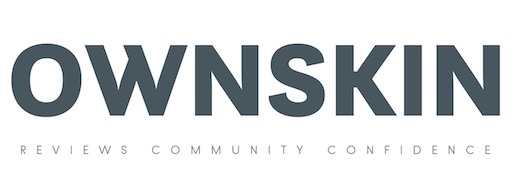Rosacea is a skin condition characterized by facial redness, and contrary to what some may believe, there’s plenty a derm can do to help treat it. Here’s what you need to know about rosacea and the benefits and risks of rosacea laser or light therapy.(Related: Could You Have Rosacea? Here Are the Symptoms)
What is rosacea?
“Rosacea is an inflammatory skin condition that can cause pimples similar to acne as well as broken capillaries that cause flushing and blushing,” explains dermatologist Peterson Pierre, MD, founder of the Pierre Skin Care Institute in Thousand Oaks, California. “It can also affect the eyes, resulting in a dry, gritty sensation, or cause an overgrowth of the oil glands on the nose leading to a deformity.”There are four types of rosacea, including erythematotelangiectatic rosacea (flushing and redness), papulopustular rosacea or acne rosacea (acne-like bumps with redness), phymatous rosacea (large and red nose), and ocular rosacea (dry, red, burning eyes).Despite a familiarity with the symptoms of rosacea, the cause is still unknown and there is no cure. But doctors have pinpointed a number of effective treatment methods, including topical and oral prescription medications and laser therapy.
What is laser therapy?
“Laser therapy is a noninvasive technique that utilizes a therapeutic dose of light to promote cellular healing and decrease inflammation,” says New York City-based cosmetic dermatologist Michele Green, MD. “It provides a deep, targeted effect that reduces pain and restores normal range of motion to the area.” Laser therapy is effective because doctors are able to pinpoint a specific area or group of damaged or inflamed cells to treat without affecting other parts of the face.
Types of laser or light therapy
Dermatologists rely on several types of laser or light therapies.”The V-Beam pulsed dye laser is the gold standard for rosacea treatment,” says Dr. Green. “It utilizes a 595nm wavelength of intense light to selectively absorb and treat anything red. Following the laser pulse, the laser energy is transmitted to the blood vessel wall, which leads to a narrowing of the blood vessel and shrinks the size of the blood vessel.”The treatment takes only a few minutes and doesn’t cause any bruising or require downtime post-appointment.Another common form of therapy is intense pulsed light (IPL) therapy. “Also known as photofacial, IPL is also very good for treating the redness associated with rosacea,” says Dr. Pierre.Other options include red/blue light therapy (a form of LED light therapy to reduce inflammation or redness); KTP laser therapy (bright greenlaser light that repairs shallow blood vessels); Cynergy pulsed dye laser (similar to the V-Beam); Erbium YAG laser (treats visible blood vessels and helps correct a large and red nose); and CO2 laser (helps reshape the nose and other facial areas that are thickened or puffy from rosacea).(Related: Does Blue Light Therapy for Acne Work?)
Does laser or light therapy work for everyone?
“Laser treatment only addresses the redness associated with rosacea but is not a treatment for rosacea itself,” says Dr. Pierre. “The laser heats up the broken capillaries and destroys them, thereby decreasing the associated redness.”Dr. Green agrees that the way your rosacea presents will impact whether laser therapy will be beneficial. If your primary symptoms are pimples or pustules (papulopustular rosacea), thickening of the skin (phymatous rosacea), or a bulbous growth around the nose (called rhinophyma), laser treatment may not be as effective.But if redness is your biggest problem, laser therapy can helpand fast. “Most patients report that laser treatment helps reduce visible blood vessels, flushing, and redness,” says Dr. Green. “And depending on the severity of the redness, you can see improvement with just one treatment. However, multiple treatments are required to get the best results.”Treatment plans are customized based on a individual patient’s unique needs, Dr. Green adds. “Depending on the patient’s symptoms, a combination of oral, topical, and laser treatment may be recommended to manage their rosacea,” she says.
What the science says
Indeed, the combination approach has been proven effective. In a study, published in 2020 in the journal Lasers in Surgery and Medicine,rosacea patients with facial redness were treated with a prescription topical cream and/or a form of light therapy. Those treated with both saw improvement in the severity of their redness, more so than from either therapy alone.The researchers suspect that the treatments work in different yet complementary ways to yield speedy results.
Side effects
Laser or light treatments for rosacea will likely result in an increase in redness on the face or nose (depending on the targeted area). This should fade in two weeks. Other side effects may include skin tightness, a rash of purple or red spots (which fade in one to two weeks), itching, or pain. Your dermatologist will also provide you with instructions on how to care for your skin post-treatment.
The last word
Most dermatologists are trained to administer laser therapy for rosacea in-office, as the procedure is noninvasive and relatively short. The only catch: These treatments are not covered by health insurance.”Although laser light therapy is very effective in treating rosacea, which is a medical condition, insurance companies do not consider the treatments medically necessary,” says Dr. Green.Prices can vary greatly, as they typically depend on the size of the area that is being treated. The V-Beam laser therapy for rosacea will likely cost between $300 and $800 per session, while IPL therapy should fall within the lower end of that range. “You will definitely see improvement in the redness after one treatment,” says Dr. Pierre. “But three to five are generally recommended for best results.”To find out if laser or light therapy will work for you and how much it costs, contact your dermatologist’s office.Next: What You Need to Know About Rosacea, Straight From a Dermatologist
The post Thinking About Laser or Light Therapy for Rosacea? Here’s How It Works appeared first on Best Health Magazine Canada.
Best Health Magazine Canada
XOXO

